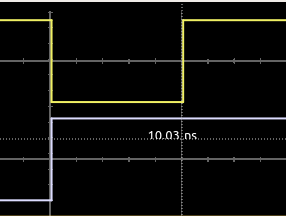I tried to model a simple stepper driver like the TI DRV8825. This driver has two pins "DIR" for direction and "STEP" in order to execute one step.
Additionally, there are more pins in order to distuinguish between full and part step modes.
I tried to emulate this with an up-counter, which counts up on every "STEP" and a RAM/ROM IC, which contains the distinct voltages on A+, B+ and A-, B- for each step.
Since the stepper in Simulide already work with 5V I thought the output of the RAM/ROM IC should already work as driver. Additionally, I tried an impedance conversion via a buffer.
Without a buffer the stepper motor often jumps back and is not able to make a full turn. With the buffers it's much better, but there are still some back-steps visible.
How could this be solved?
Additionally, there are more pins in order to distuinguish between full and part step modes.
I tried to emulate this with an up-counter, which counts up on every "STEP" and a RAM/ROM IC, which contains the distinct voltages on A+, B+ and A-, B- for each step.
Since the stepper in Simulide already work with 5V I thought the output of the RAM/ROM IC should already work as driver. Additionally, I tried an impedance conversion via a buffer.
Without a buffer the stepper motor often jumps back and is not able to make a full turn. With the buffers it's much better, but there are still some back-steps visible.
How could this be solved?
- Attachments
 stepper.zip
stepper.zip - You don't have permission to download attachments.
- (2 Kb) Downloaded 17 times
Last edited by arcachofo on Fri Dec 24, 2021 3:23 am; edited 1 time in total (Reason for editing : Marked as Unsolved (red color))

 Latest images
Latest images




